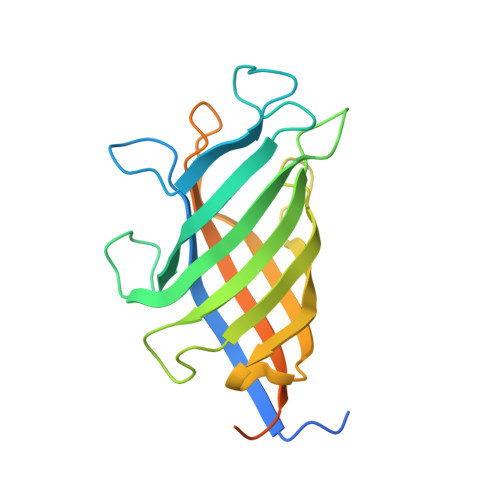Pterocarpan synthase (PTS) structures suggest a common quinone methide-stabilizing function in dirigent proteins and proteins with dirigent-like domains.
Meng, Q., Moinuddin, S.G.A., Kim, S.J., Bedgar, D.L., Costa, M.A., Thomas, D.G., Young, R.P., Smith, C.A., Cort, J.R., Davin, L.B., Lewis, N.G.(2020) J Biol Chem 295: 11584-11601
- PubMed: 32565424
- DOI: https://doi.org/10.1074/jbc.RA120.012444
- Primary Citation of Related Structures:
6OOC, 6OOD - PubMed Abstract:
The biochemical activities of dirigent proteins (DPs) give rise to distinct complex classes of plant phenolics. DPs apparently began to emerge during the aquatic-to-land transition, with phylogenetic analyses revealing the presence of numerous DP subfamilies in the plant kingdom. The vast majority (>95%) of DPs in these large multigene families still await discovery of their biochemical functions. Here, we elucidated the 3D structures of two pterocarpan-forming proteins with dirigent-like domains. Both proteins stereospecifically convert distinct diastereomeric chiral isoflavonoid precursors to the chiral pterocarpans, (-)- and (+)-medicarpin, respectively. Their 3D structures enabled comparisons with stereoselective lignan- and aromatic terpenoid-forming DP orthologs. Each protein provides entry into diverse plant natural products classes, and our experiments suggest a common biochemical mechanism in binding and stabilizing distinct plant phenol-derived mono- and bis-quinone methide intermediates during different C-C and C-O bond-forming processes. These observations provide key insights into both their appearance and functional diversification of DPs during land plant evolution/adaptation. The proposed biochemical mechanisms based on our findings provide important clues to how additional physiological roles for DPs and proteins harboring dirigent-like domains can now be rationally and systematically identified.
Organizational Affiliation:
Institute of Biological Chemistry, Washington State University, Pullman, Washington, USA.














